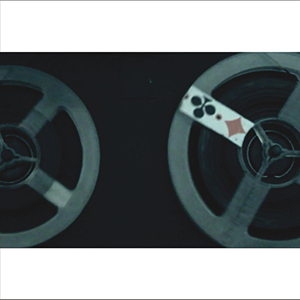 Continuing his concept of "sound recycling", Sebastian Banaszczyk’s latest work is the studio recording of a piece first performed in 2014. As part of the Festiwal Dekonstrukcji Slowa in Poland, he performed this work (translated as "The Old Writer") as a tribute to William S. Burroughs on his 100th birthday. Consistent with his work to this point, it is a brilliant deconstruction of sounds that bear little resemblance to their source, but perhaps what is most surprising is the amount of conventional music he chose to employ, giving an added layer of depth to an already complex record.
Continuing his concept of "sound recycling", Sebastian Banaszczyk’s latest work is the studio recording of a piece first performed in 2014. As part of the Festiwal Dekonstrukcji Slowa in Poland, he performed this work (translated as "The Old Writer") as a tribute to William S. Burroughs on his 100th birthday. Consistent with his work to this point, it is a brilliant deconstruction of sounds that bear little resemblance to their source, but perhaps what is most surprising is the amount of conventional music he chose to employ, giving an added layer of depth to an already complex record.
These musical elements take the form of snippets of recordings of traditional Moroccan music.Befitting the subject matter, Banaszczyk chose not to recontextualize them as drastically as he tends to do with his source material, and instead lets some of the traditional rhythms and melodies shine through.This is perhaps the most pronounced on "Agent Lee" and "Tangier".The former features him blending painfully sharp stabs of noise with hints of distortion with low fidelity rhythmic loops, while the latter is also built upon Middle Eastern stringed instruments, with a tasteful amount of processing done to give them an otherworldly quality, while retaining their traditional sound as well.
Comparisons to Muslimgauze are inescapable at this point, because Banaszczyk is working with similar material, and is also treating said material electronically.However, the comparison is a loose one, because here the sounds are less harsh, conjuring more of a pensive mood than the aggressive style Bryn Jones would often employ."Memories of Tangier", which closes the album, functions as a distillation of the aforementioned composition, heavily featuring percussion loops and some distinctly raw moments that also appear.
The pieces in which rhythms are not as prevalent are, unsurprisingly, more reminiscent of Banaszczyk’s previous work, but again exemplifying the strides he has made as a composer."The Mayan Caper", for example, is an excellent collection of weird textures and dissonant buzzes, leaving no obvious clues as to where the material was sourced from.The lengthier "The Western Lands" is more of an exercise in subtlety, building from a quiet opening into haunting passages of sound.At times the sound peaks into more sci-fi tinged spacy moments that are not unlike some of Robert Hampson's best work, but still sounds entirely like Bionulor.
Sebastian Banaszczyk has been using his Bionulor guise in a growing array of contexts, expanding both his compositional methodology as well as working in a greater multimedia context, such as his previous recordings for dramatic performances.Like those, however, Stary Pisarz works as a record completely divorced from its conceptual roots.I especially enjoyed his concessions to rhythm and melody, which gave those pieces an even more compelling quality.But even without these new developments in his sound, the record excels on the strengths of its unique tones and textures as well.
samples:
 
Read More

